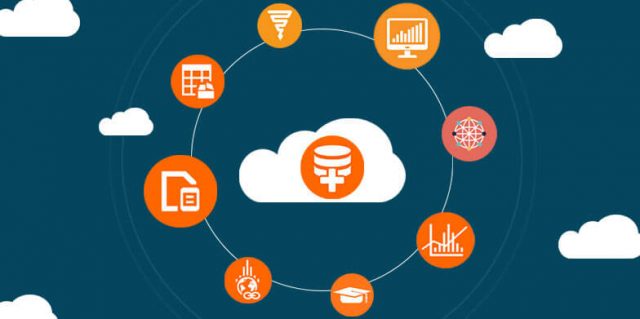The business world has changed immensely in the last ten years. With increased connectivity comes the ability to gather and store vast amounts of data. This could be anything about customers, prices, interactions, and more. But how can companies make use of this data and use it to inform better decisions?
Enter business intelligence (BI). BI uses tools to analyze complex data, identify patterns, and maximize efficiency. But how do you find the right BI tools for your company’s needs and objectives?
Iteration Insights discusses the importance of effective BI tools when making the most out of your company’s data. This article will provide valuable insights into harnessing your data with the right BI tools.
Utilizing Data to Make Smart Decisions
Using data-driven insights enables business users to react quickly and efficiently to changes in the market. Collecting, analyzing, and presenting data will become easier with the right BI tools.
Good business intelligence software allows for faster discovery of trends. It does the same for potential opportunities or threats. It also lets business users see other actionable insights.
Additionally, it provides clear views of current realities and plans. Utilizing data allows the people involved to understand where the company currently stands. In the same manner, it shows how best investments should be allocated in the future.
Using BI tools correctly can help businesses increase their efficiency. It also enables better allocation of resources. So ensure you’re constantly collecting data from different sources. And use all this information to make smarter business decisions.
Knowing Your Audience and Their Needs
Having the right business intelligence tools starts with knowing your audience. Who is visiting your website? What are their needs? Which trends will affect them?
Gathering data about your customers is key to understanding who you’re targeting. It also provides much-needed context for the decisions you make.
For example, let’s say you own an outdoor gear store and need data on seasonal clothing sales. You could use a business intelligence platform like Google Analytics for this. It will allow you to track customer locations and preferences.
This data can help inform product designs, marketing campaigns, etc., that fit the needs of different audiences.
Also, consider factors like age, gender, location, and income when looking at consumer data. It’s vital to know how consumer trends differ across markets. This allows you to tailor your products or services accordingly. It also ensures that they reach the right shoppers!
Making Use of Drill-Down Analyses
Drilling down your data can be a great way to uncover valuable business insights you may be missing. With the right BI tools, you can get an in-depth understanding of complex patterns in your business data.
You can go from high-level overviews to fine details as you analyze your data. In turn, this could help you develop meaningful reports and decisions.
Drill-down analysis helps you make more informed decisions. It provides even more comprehensive insight into trends and relationships. And it can reveal underlying facts driving the enterprise’s performance.
For example, drill-down analysis is invaluable in understanding customer loyalty behaviors. With detailed business analytics, you can look into customer behaviors more closely. This could provide insights that would be impossible to ascertain with traditional tools.
Drill-down analyses help increase your business’ accuracy through pre-made dashboards or custom metrics. It also helps you better understand your data. And this has become critical for success in today’s competitive marketplaces.
Staying on Top of Trends with Predictive Analytics
With predictive analytics, you can detect patterns in your data. As a result, you can also gain insights into what your customers are likely to do next. This helps you create better strategies and make smarter business decisions.
One way to use predictive analytics is to identify correlations between customer activity. These are things like purchasing trends, website visits, and response rates. By tracking these, you can predict which products would be the most successful with your target audience.
Predictive analytics tools also allow you to segment customers according to various characteristics. This implies that you can design marketing campaigns targeting specific audiences more effectively.
Predictive analytics is an invaluable resource for staying ahead of the competition. It’s also crucial in understanding what your customers need from you before they even ask for it!
Unlocking the Potential in Unstructured Data
Businesses are now striving to unlock the potential of unstructured data. This consists of information not organized into fields, rows, and columns. Unstructured data requires special tools to be able to access, analyze, and report.
Good thing there are BI tools that do this. These let you explore massive amounts of unstructured data that your business produces every day. They use natural language processing (NLP), artificial intelligence (AI), and machine learning. These tools seek to understand user intent from text-based sources. Some examples of this would be emails or chat conversations.
Advanced analytics tools can also show relationships between different datasets within unstructured data sources. For example, businesses can combine AI with interactive visualizations like dashboards. Doing so gives them an even richer view of how consumers interact with their products.
Make the most out of your unstructured data through analytics platforms. This allows you to gain valuable insight into customer behavior. And you can then use it to increase profits while improving customer service.
Optimizing BI Tools for Collaboration & Communication
Today’s BI tools now include features designed specifically for collaboration and communication. These key features enable teams to aggregate data in a single dashboard.
This enables everyone to get on the same page in an instant. It also lets business users stay informed of metrics and trends across various departments. And the best part? You can get all these without having to search through individual databases constantly.
By collaborating on one interactive dashboard, teams can more easily share goals. They can also plan initiatives and develop strategies. In addition, these tailored dashboards allow businesses to identify problems and track progress.
Moreover, some BI tools offer pre-built templates for reporting. This streamlines the presentation of data to be easy to understand and visualize. And this proves invaluable when giving updates or presenting results to stakeholders.
Some tools also have automated scheduling capabilities. Through this, businesses can ensure that everyone always has up-to-date information. Moreover, these can be in their inbox at a predefined frequency.
When used properly, today’s BI tools make it easier for teams to stay aligned on the same vision or goal. They allow partners to access real-time insights generated from current business activities.
Making BI Work for Your Business
Leveraging business data can empower data-driven decision-making for organizations. It also allows companies to make better decisions faster.
Finding the right set of BI tools that provide deep insight into your data isn’t easy. But when you get it just right, you can unlock all your data’s potential!
Investing in these tools will leave you with a better return on investment over time. So, ensure you’re making the most of them before it’s too late.
Follow Technoroll for more!
Editorial Staff of the TechnoRoll, are a bunch of Tech Writers, who are writing on the trending topics related to technology news and gadgets reviews.




